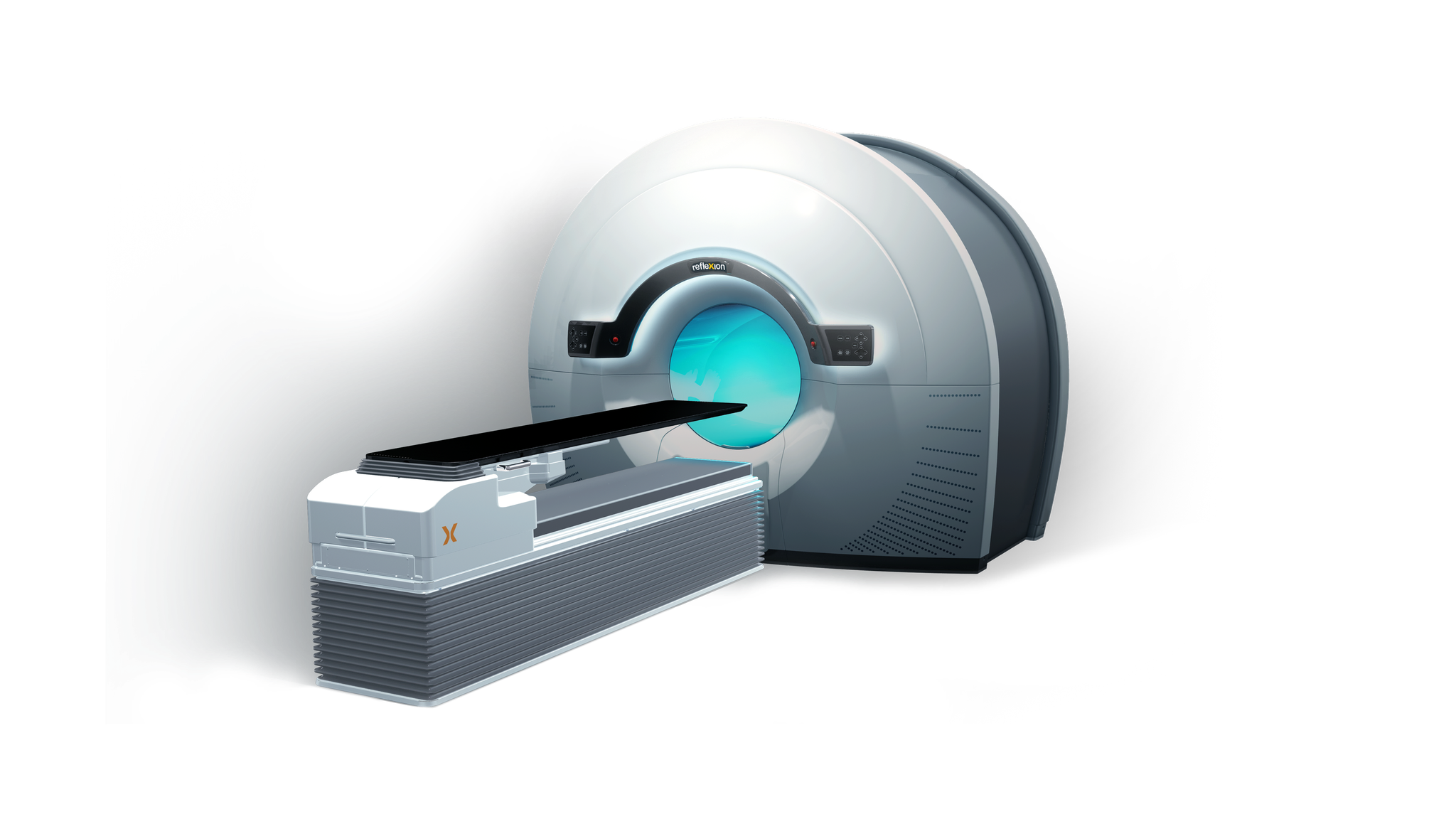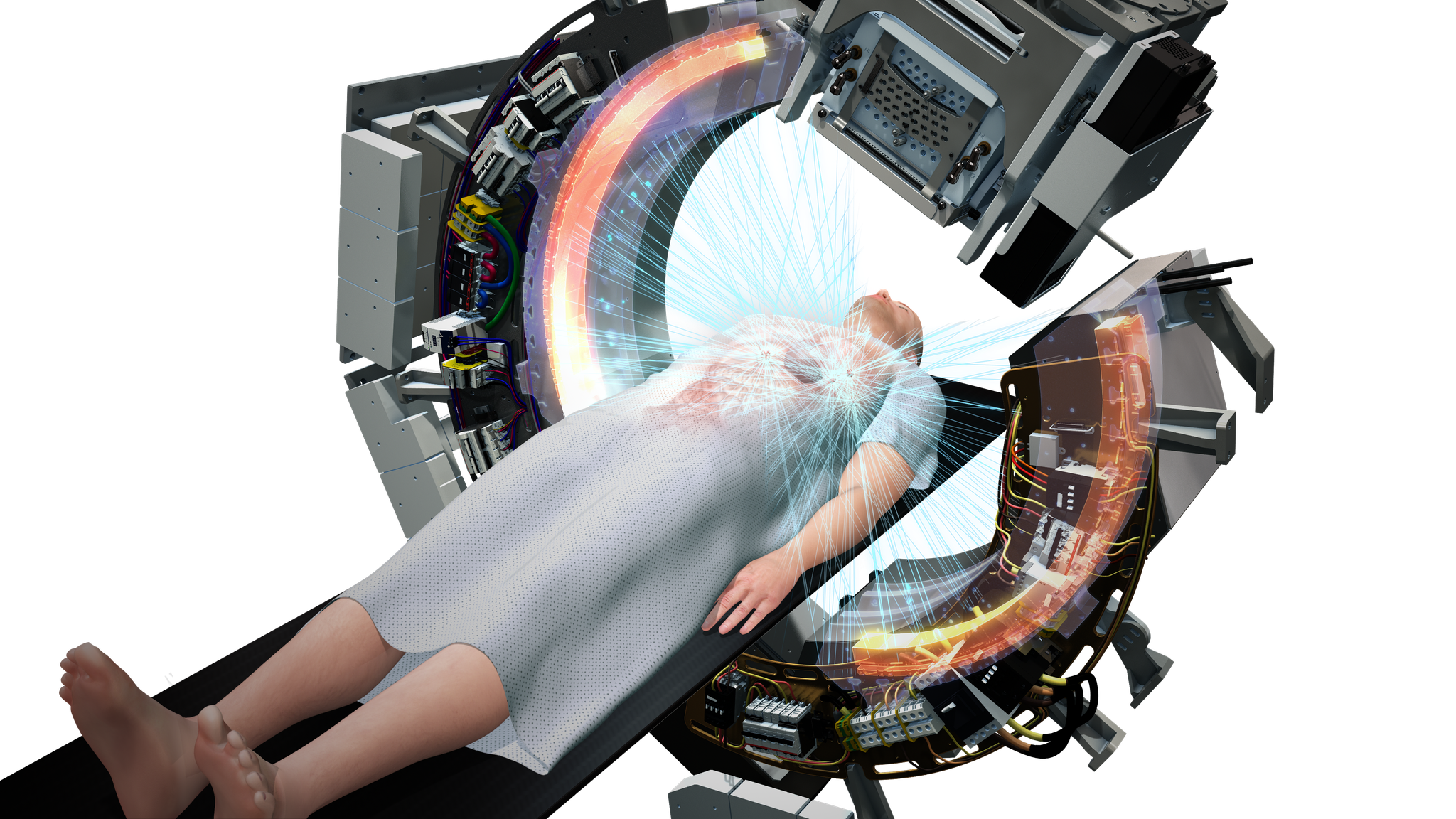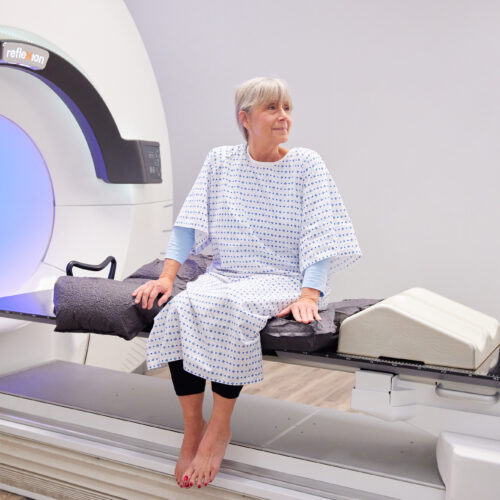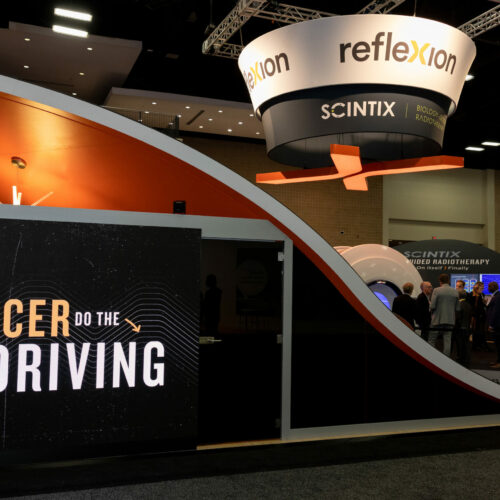
BgRT
Presentations at ASTRO 2021 Highlight RefleXion’s X1 as a New Modality With the Potential to Treat All Stages of Cancer
January 20, 2022
For the fourth consecutive year, RefleXion Medical presented clinical abstracts at the American Society for Radiation Oncology (ASTRO) Annual Meeting—a premier opportunity for presenters to showcase their research and their technologies for the U.S. radiation oncologist and oncology provider communities. The 2021 Annual Meeting was held in Chicago, October 24-27, 2021.
Our presentations at the meeting highlighted significant achievements for the company, including highlighting the RefleXion® X1 platform with biology-guided radiotherapy (BgRT) as a new modality with the potential to treat all stages of cancer. Our presentations spanned three categories of clinical abstract research: metastatic disease and disease burden, feasibility of using FDG and PYLARIFY tracers®†, and comparison and evaluation of BgRT plans. We produced six clinical abstracts jointly with our academic clinical partners. We also presented in three categories of physics abstract research: physical confirmation and validation of BgRT, beam & kVCT commissioning, and comparison of PET/CT with X1 PET.
Some of our earliest adopters presented on commissioning the first machine at Stanford Cancer Institute, which has delivered hundreds of fractions of conventional radiotherapy using the X1 platform. Researchers from the Department of Radiation Oncology at the Stanford University School of Medicine and RefleXion Medical presented “First beam commissioning report of a novel medical linear accelerator designed for biologically guided radiotherapy,” a study that reports on the dosimetric commissioning of the first clinical X1 machine at Stanford Cancer Center and compared with reference data provided by RefleXion. These data will serve as a clinical reference for the RefleXion treatment planning system’s beam model and can act as a standard for comparison and beam model improvement for units installed at future clinical sites.
Another study conducted by Stanford and RefleXion researchers evaluated BgRT plans generated using PET phantom data acquired on the X1. The presentation, “Initial evaluation of biology-guided radiotherapy plans generated using PET acquired on the first installation of Reflexion X1 system,” is the first report of BgRT plan creation using a clinically installed system. The researchers found the X1 was able to optimize and deliver BgRT plans for both homogenous and heterogeneous FDG uptake scenarios. Given that BgRT is a new paradigm of dose optimization, a new set of optimization and evaluation approaches will be needed. The researchers also presented on the positioning accuracy, image quality and dose commissioning of the kVCT imaging system. In their study, “The kVCT system commissioning of a novel medical linear accelerator designed for biology-guided radiotherapy,” researchers found that image quality and the Hounsfield Unit (HU) quality are consistent with CT simulators and is a useful tool for online adaptive radiotherapy. The commissioning data will serve as a standard for units installed at future clinical sites.
Our presentation, “Comparison of a first-in-class LINAC-integrated PET system and a diagnostic PET/CT scanner,” focused better understanding of the X1 PET performance by conducting a side-by-side comparison of images of a PET phantom obtained sequentially on the X1 PET subsystem and a traditional PET/CT scanner. The researchers concluded that the X1 PET subsystem generates images that are qualitatively comparable to a traditional PET scanner.
BgRT delivers a real-time tracked dose of radiation to moving targets using a continuous stream of limited time-sampled (LTS) PET images for motion management. LTS PET images are converted into fluences and delivered to the target that cumulatively sum to deliver the intended prescription dose to the planning target volume (PTV). “Physical validation of biology-guided radiotherapy for delivering a tracked dose distribution to a moving PET-avid target” is the first report of BgRT delivery achieving a tracked dose distribution directed at a moving target. Because tracked distributions have better conformality and normal tissue sparing than free-breathing internal tumor volume approaches, the researchers determined BgRT may improve the toxic-therapeutic ratio for applications such as early-stage lung cancer.
“Disease Burden on FDG-PET Predicts Outcomes for Advanced Non-Small Cell Cancer (NSCLC) Patients Treated with First-Line Immunotherapy” reviewed outcomes for patients treated with first-line immunotherapy for NSCLC to test the hypothesis that measures of disease burden on staging FDG-PET/CT would have prognostic value. For advanced NSCLC patients treated with first-line immunotherapy, researchers found that having oligometastatic disease is a powerful favorable prognostic factor. Also, the presence of brain metastases does not seem to affect outcomes, which may reflect the activity of immunotherapy in the central nervous system. The researchers determined that volume of disease on FDG-PET could provide additional prognostic information.
Randomized trials have shown metastases-directed therapy for oligometastatic NSCLC—that is, cancers in which the NSCLC travels to create a small number of new tumors in one or two other parts of the body—improves outcomes. However, it’s unclear what proportion of patients with metastatic disease are oligometastatic at presentation. “Characterization of the Entire Metastatic Spectrum for Non-Small Cell Lung Cancer in the Immunotherapy Era” is the first study to characterize the metastatic spectrum in a modern cohort of advanced NSCLC. Sixty-six patients (53%) received immunotherapy as monotherapy, and 58 (47%) received immunotherapy with chemotherapy. Distant metastases were most commonly located in bone (35%), distant lymph nodes (22%), and the liver (10%). Most patients (73%) had more than three hypermetabolic lesions when primary, regional, and distant metastatic lesions were counted. The study authors concluded that technological approaches can ablate multiple lesions efficiently in diverse anatomic locations. Researchers will also investigate the debulking (surgical removal of tumor) hypothesis beyond the oligometastatic range.
Treating multiple lesions with stereotactic body radiotherapy (SBRT) is challenging. Researchers hypothesized that a single-isocenter treatment plan technique for multi-target scenarios may optimize the final, aggregate dose distribution. Our presentation, “Dosimetric comparison of single-isocenter and multiple-isocenter techniques for two-lesion lung SBRT using the RefleXion high-speed ring-gantry system,” highlighted the findings of a comprehensive dosimetric comparison for multiple targets that contrasts multiple isocenters versus a single-isocenter technique in two-lesion lung SBRT cases. This study concluded that a single-isocenter technique for the scenario of two lung lesions is dosimetrically feasible and clinically efficient with the X1 in SBRT mode. In addition, it was determined that single-isocenter treatment delivery techniques may be a desirable option for efficient radio-ablative therapies directed at multiple metastatic targets.
“Evaluation of PSMA-PET biology-guided radiotherapy sequential boost to the dominant intraprostatic lesion in low-volume advanced prostate cancer,” was an investigation of the feasibility of BgRT sequential boost to the dominant intraprostatic lesion (DIL) given the proximity of nearby bladder activity by quantifying the ratio of standard uptake value (SUV) to background SUV in relevant regions. We found an nSUV greater than 3 was achieved in more than 95% of all clinical target volumes (CTVs) for all shell thicknesses investigated, which suggests that prostate-specific member antigen (PSMA)-guided BgRT is a feasible modality for sequential boost directed at the dominant intraprostatic lesion. We also found that if the bladder proximity interferes with BgRT planning, or if even greater tumor-to-background contrast is desired, additional refinements may be required, such as modifications to the BgRT algorithm that enable masking of the bladder.
The presentation, “Feasibility of using FDG in the Stereotactic Ablative Setting for Tracked Dose Delivery with BgRT: Results from a Prospective Study of Serial Inter-Fraction PET/CTs,” presented the findings of an evaluation of the predicted dose distribution for BgRT based on serial FDG scans obtained over a course of stereotactic ablative radiotherapy (SABR). This investigation provides initial evidence that FDG scans remain stable enough over a course of ablative radiotherapy to enable dynamically tracked dose delivery with BgRT. The study authors found that significant changes in FDG biodistribution that would prevent dose from being delivered within the pre-approved bounds of the BgRT plan can be identified through analysis of a pre-scan PET image. The study researchers are preparing a prospective clinical trial to confirm these results.
Finally, our presentation, “Physical confirmation of biology-guided radiotherapy directed at static targets with varying shapes and background contrast environments,” focused on the BgRT delivery performance in the case of static targets for dose accuracy measurement with ArcCheck. The study results showed that all BgRT deliveries met 3% / 3mm gamma pass criteria greater than 95% (range, 95.2% to 98.9%). Also, gamma passing rates were not significantly different than the companion SBRT plans performed on the same targets (p=0.16). The researchers concluded that dose accuracy results indicate that BgRT plans can be delivered accurately over a variety of test conditions (different target shapes, attenuating media and activity concentration levels) to FDG-avid targets, with performance similar to SBRT treatments.
This past year has been an exciting one for RefleXion Medical—including several firsts—and our presentations at ASTRO ‘21 reflect our ongoing clinical research and validation of the X1 system as a novel technology that may one day treat all stages of cancer. Our research will continue with our partners, and we look forward to presenting even more comprehensive research throughout 2022.
* The RefleXion® X1 is cleared for SBRT/SRS/IMRT treatments. BgRT is limited by U.S. law to investigational use.
† Fluorodeoxyglucose (FDG) is “a nonspecific imaging agent whose accumulation is based on the higher metabolic rate of tumors compared with surrounding normal tissue.”1 PYLARIFY (PYL) (piflufolastat F 18) Injection “is a radioactive diagnostic agent indicated for positron emission tomography (PET) of prostate-specific membrane antigen (PSMA) positive lesions in men with prostate cancer.”2
References:
- Fluorodeoxyglucose (FDG). Endocrinology. 6th ed. 2010. https://www.sciencedirect.com/topics/medicine-and-dentistry/fluorodeoxyglucose
- PYLARIFY. https://www.pylarify.com/






